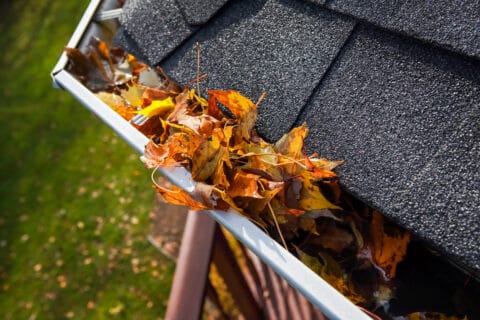How to Plan Proper Gutter Drainage for Your Home
 Revised by Bruce Hulse
Revised by Bruce Hulse
Effective gutter drainage is essential for protecting your home from significant water damage. While many homeowners underestimate its importance, a properly designed gutter drainage system can prevent costly repairs, safeguard your foundation, prevent soil erosion, and maintain the long-term structural integrity and aesthetics of your property. This comprehensive guide details the essential considerations, best practices, and strategies for planning and maintaining an effective gutter drainage system for your home.
Understanding the Importance of Proper Gutter Drainage
Why Gutter Drainage Matters for Your Home
Gutter drainage is the process of capturing rainwater from your roof and directing it safely away from your home’s foundation and landscaping. Proper drainage prevents water from pooling around your home’s base, protecting your foundation from erosion and structural weakening. A well-maintained gutter system also ensures your landscaping remains intact, preventing costly soil erosion and maintaining the value and visual appeal of your property.
Homes with well-planned gutter drainage systems experience fewer basement leaks, reduced risks of flooding, fewer mold and mildew issues, and significantly lower maintenance costs over time. In short, investing in proper gutter drainage helps safeguard your property’s long-term stability and value.
Consequences of Poor Gutter Drainage
Neglecting your gutter drainage system can lead to numerous costly and potentially hazardous problems. Homes without adequate drainage face persistent flooding, basement moisture issues, structural damage, and soil erosion around the foundation. Over time, water infiltration damages siding, weakens wood structures, and creates ideal conditions for mold growth.
Poor drainage also contributes to the formation of ice dams during winter, causing gutter detachment and additional exterior damage. These issues not only reduce your home’s value but also create significant health and safety risks for occupants. Regular attention to gutter drainage, therefore, is vital for avoiding these severe outcomes.
Common Problems Associated with Faulty Gutter Systems
Basement Leaks and Flooding
One of the most immediate consequences of inadequate gutter drainage is basement flooding. When water pools near your home’s foundation, it often finds its way through minor cracks or imperfections into the basement. Even small leaks can quickly escalate, causing widespread damage, mold growth, and health hazards related to damp conditions.
Basement flooding is expensive to remediate, making proactive drainage management a crucial step in protecting your home and family from preventable water-related problems.
Foundation and Exterior Damage
Persistent water exposure due to faulty gutters can erode the soil supporting your foundation, leading to settling, shifting, and eventual structural instability. Signs of foundation damage include cracks in walls, uneven floors, misaligned doors and windows, and visible gaps in exterior structures.
Additionally, moisture buildup can damage your home’s siding, causing rot, discoloration, and peeling paint—problems that significantly reduce curb appeal and necessitate costly repairs.
Risks of Soil Erosion
Poorly managed gutter runoff can lead to serious soil erosion around your property. As soil washes away, it exposes your foundation to increased water infiltration and weakens your landscape’s stability. Over time, erosion may lead to costly landscaping restoration and expensive foundational repairs, emphasizing the necessity of maintaining proper gutter drainage.
Essential Components of a Proper Gutter Drainage System
Understanding the Key Parts of Your System
An effective gutter drainage system comprises several key components, each playing a specific role. Gutters collect rainwater running off your roof, downspouts channel this water downward, and downspout extensions or underground drainage systems guide it safely away from your home.
Gutter guards serve an additional role, preventing debris from clogging your gutters, thus maintaining consistent water flow and significantly reducing maintenance demands. Together, these components ensure a seamless and effective drainage solution, safeguarding your home against water damage.
Optimal Distance for Gutter Drainage
Proper gutter drainage isn’t just about capturing water—it’s about moving that water sufficiently away from your home’s foundation. Experts typically recommend downspouts extend at least 4 feet from your home, though ideally, they should discharge water 6 to 10 feet away. Underground drainage pipes can extend even further, often 10 to 20 feet, providing the most thorough protection for your foundation and surrounding landscape.
Ensuring sufficient drainage distance helps prevent recurring water issues and reinforces the structural integrity of your home.
Strategies for Effective Water Management
Implementing Downspout Extensions and Splash Blocks
One practical and cost-effective method of improving your gutter drainage involves adding downspout extensions. Extensions ensure rainwater is directed further away from your foundation, minimizing risks associated with basement leaks, soil erosion, and foundational instability.
In addition, splash blocks placed strategically at downspout exits help dissipate water flow, reducing erosion risk and guiding water safely away from vulnerable areas.
Utilizing French Drains and Rain Gardens
For homeowners facing persistent drainage challenges, installing French drains offers a reliable long-term solution. French drains involve buried perforated pipes surrounded by gravel, effectively rerouting excess water underground away from the foundation.
Alternatively, rain gardens offer both functional and aesthetic advantages. These shallow landscaped depressions naturally absorb runoff, reducing water accumulation and erosion while enhancing your home’s curb appeal with attractive plantings.
Advantages of Rain Barrels for Water Conservation
Rain barrels provide homeowners a practical method to capture and reuse rainwater. Installing a rain barrel beneath downspouts reduces runoff, lowers your municipal water usage, and conserves water resources. This solution is environmentally friendly, cost-effective, and easy to implement, especially for gardening and landscape irrigation purposes.
DIY Gutter Maintenance and Installation Tips
Effective Gutter Cleaning Schedule
Keeping gutters clean is crucial for maintaining effective drainage. Ideally, gutters should be cleaned at least twice a year—in spring, to remove winter debris, and in fall, following leaf drop. Regular cleaning prevents clogs, overflow, and associated water damage, extending the life of your gutter system.
Seasonal Inspection and Maintenance Checklist
Regular inspections are equally important. Homeowners should routinely inspect their gutter system after each major season to identify potential problems such as cracks, sagging, detached sections, or signs of corrosion. Timely repairs and adjustments protect your home by ensuring the system remains functional year-round.
Why Invest in Gutter Guards?
Gutter guards offer an invaluable addition to any drainage system, reducing maintenance needs significantly. These guards keep leaves, twigs, and other debris from accumulating in gutters, helping homeowners maintain consistent water flow and reducing the frequency of gutter cleaning.
Identifying Signs of Gutter Drainage Issues
Warning Signs Homeowners Should Recognize
Early detection of drainage problems can prevent costly damage. Warning signs include overflowing gutters during rain, water stains or streaks on exterior walls, pooling water near your foundation, visible erosion around your property, and consistently wet or damp basement walls.
Homeowners should respond immediately to these signals by inspecting gutters, removing clogs, or adjusting slopes to ensure water flows properly toward downspouts.
Addressing Overflow Issues During Rain
Gutters overflowing during rainfall is often the first clear sign of a drainage issue. Overflow typically indicates clogged gutters or improper gutter slope. Adjusting gutter angles to ensure proper slope—typically a quarter-inch drop per 10 feet—and clearing debris regularly can significantly alleviate these issues, restoring proper drainage.
Budget-Friendly Solutions for Improved Drainage
Landscaping as Natural Runoff Management
Strategically planned landscaping provides homeowners with a natural, budget-friendly method of managing gutter runoff. Planting shrubs, trees, or rain gardens in strategic areas helps absorb excess water, reducing surface runoff and protecting your foundation. Additionally, well-designed landscaping can enhance your home’s aesthetic appeal while mitigating water damage.
DIY Installation and Upgrades
Many homeowners can handle basic gutter upgrades themselves with readily available materials. Downspout extensions, splash blocks, and simple sealing repairs require minimal tools and expertise, allowing homeowners to improve their drainage systems effectively without significant expense.
When to Call a Gutter Drainage Professional
Identifying Situations Requiring Expert Assistance
While many gutter maintenance tasks can be handled independently, professional assistance becomes essential for persistent or complicated drainage issues. Problems such as recurring clogs, extensive foundational water issues, complex installation needs, or signs of significant structural damage require professional evaluation.
Advantages of a Professional Drainage Assessment
Hiring professionals ensures thorough and accurate diagnostics, identifying hidden drainage problems homeowners might overlook. Professionals recommend tailored solutions, expertly handle complex installations, and provide insights into enhancing your home’s overall drainage efficiency. Investing in professional assessments and repairs often leads to long-term savings by preventing severe water damage.
Conclusion: Proactive Drainage Management Protects Your Home
Effective gutter drainage management is vital for preserving your home’s integrity, appearance, and value. Properly planned drainage systems—coupled with regular maintenance, proactive measures like gutter guards, and prompt attention to issues—ensure your property remains structurally sound and visually appealing. By understanding the essentials of proper drainage and adopting best practices, homeowners can safeguard their homes against costly water damage and enjoy lasting peace of mind.


